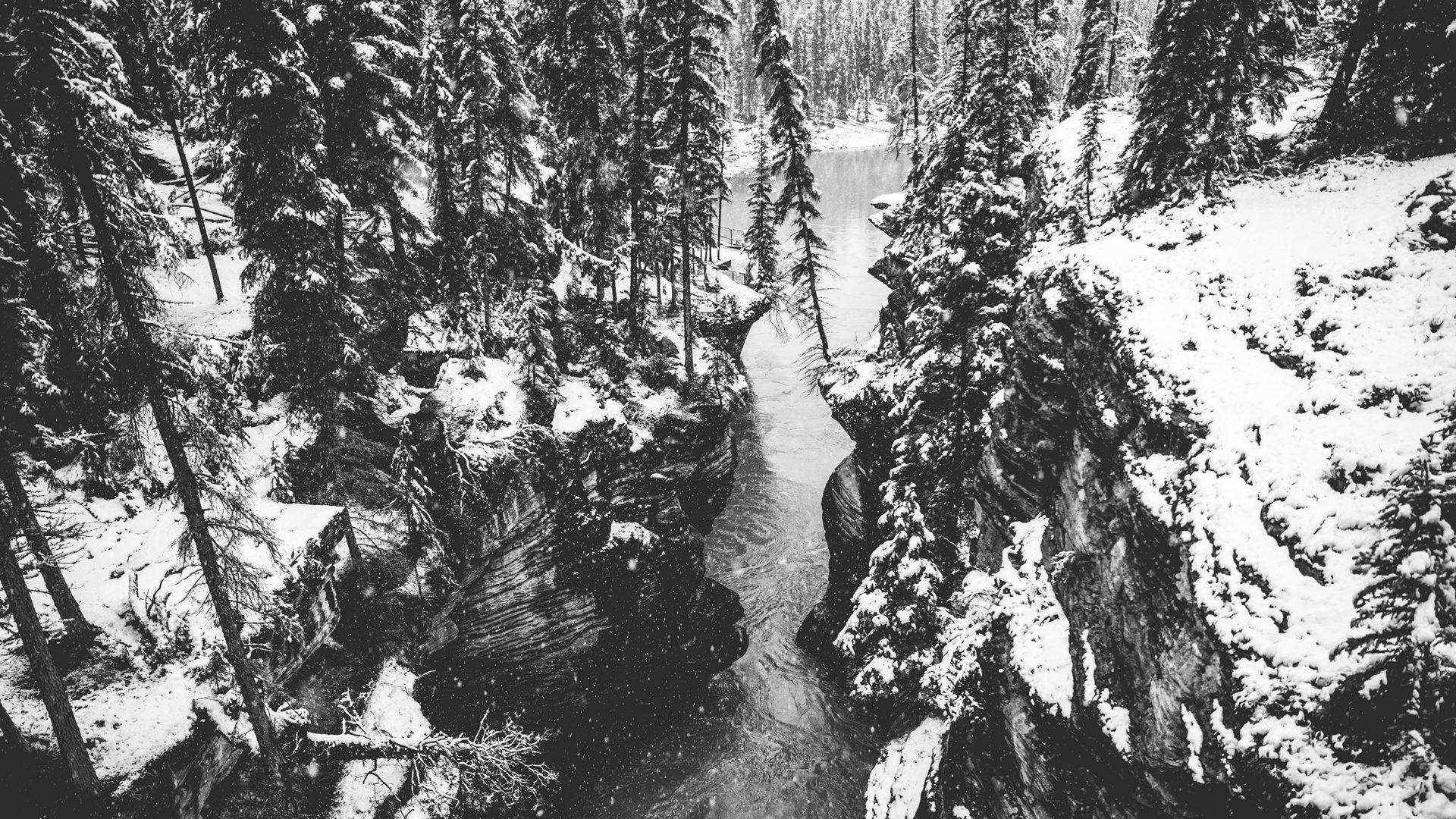Field Trip 5: Nanaimo Regional Landfill
Introduction
On March 13, 2024, the class of Geol 312 were lucky enough to visit the Nanaimo Regional Landfill in Cedar on a gorgeous, warm, early Spring day. At the landfill, we met with Chad, a P.Geo with a mining and environmental background who has worked here for about 8 years. This field trip highlighted the importance of understanding the processes our waste goes through once we throw it in the bin. Every step from the collection to the disposal at the dump, to the leaching and gas release once decomposing.
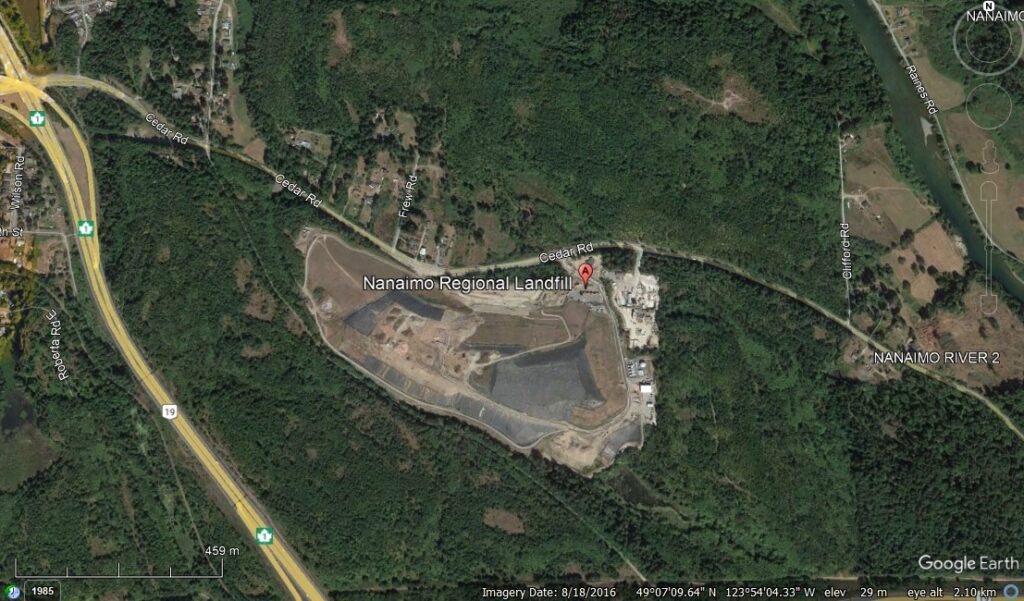
Figure 1: Nanaimo Regional Landfill aerial photo. Photo from Google Earth Pro.
Background Information
The Nanaimo Regional Landfill was established soon after the coal mining in the area ceased, about 80 years ago. Our guide, Chad, hypothesized that officials chose this specific spot in the 20-30s for the landfill because it was an open pit mine, and why not fill it in with garbage? In Figure 2 below, there is a map of the coal mines, the yellow box is where the Nanaimo Landfill sits today. When this landfill began, concepts surrounding the leaching and decomposition of waste weren’t known/at the forefront of minds. Therefore, part of the landfill does not have a plastic liner below, allowing the leachates to escape into the ground below, possibly contaminating the groundwater. I assume it would cost too much money and resources to dig that garbage up, place a liner, and perhaps in this they could also sort through the 80-year-old garbage for materials that could be recycled. However, it would be interesting, almost like an archeological dig in a sense, as well as keeping more contaminants out of the groundwater. Instead of taking up my super cool, fun idea, the landfill has covered this old, pre-plastic liner garbage pile with plastic to ‘protect’ it from precipitation and therefore further leaching.
Today, the landfill operates on a 21-hectare section of a 38-hectare property, approximately 2.7 hectares of which have been permanently closed. According to the “Regional District of Nanaimo Solid Waste Management Plan” in 2011, a “North Berm Lateral Expansion is currently underway and will add approximately 10 years of capacity to the site. One final expansion in the southeast area of the site is planned when the North Berm area is filled. The site has been receiving municipal solid waste from the Regional District of Nanaimo since 1971 and given the current tonnages of wastes received, the operation life of the landfill is expected to continue until 2038”. During our visit, however, Chad had mentioned they expect the landfill to continue until 2043 at the rate it is going now. I’m not sure what the discrepancy is or means, but perhaps they have a more optimistic view now with recycling technologies.
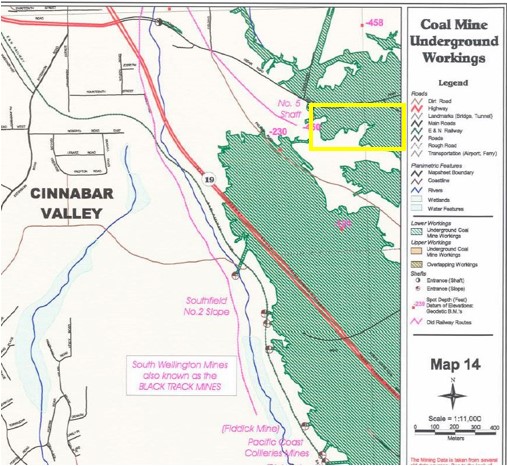
Figure 2: Coal Mine Underground Workings Map (date unknown). The yellow box is where the Nanaimo District Landfill is today.
Site Visit Overview
Nanaimo Regional Landfill collects on average, 60,000 tons of waste per year. However, in these last two years, they have collected about 80,000 tons per year. This increase is thought to be a domino effect of COVID. The majority of what is collected, according to the previously mentioned 2011 report, is compostables. Figure 3 below is a pie chart breakdown of what is collected. I’d be curious to know if this has changed at all with the push of composting in recent years. However, I have noticed in Nanaimo that composting bins are not provided for most apartment complexes, which make up a considerable amount of housing in the RDN. Also, many people don’t compost, which is a pet peeve of mine.
The garbage that does come in, is sorted once in the landfill. Items are taken out, for instance, chunks of metal, and other recyclables, to be recycled properly. Chad stated that about 68% of waste that comes in, is redirected to be recycled. The goal for the landfill is to get this number up to 90%. For this, they have a wood grinder and metal recycling, among other processes. From what is put in the landfill and buried, the workers grind these items up, creating more airspace for more trash. This grinding produces 10-20% more airspace for trash, rather than just layering items intact, which extends the landfill’s life. There are about 200-400 tons of garbage that come in per day to the landfill.
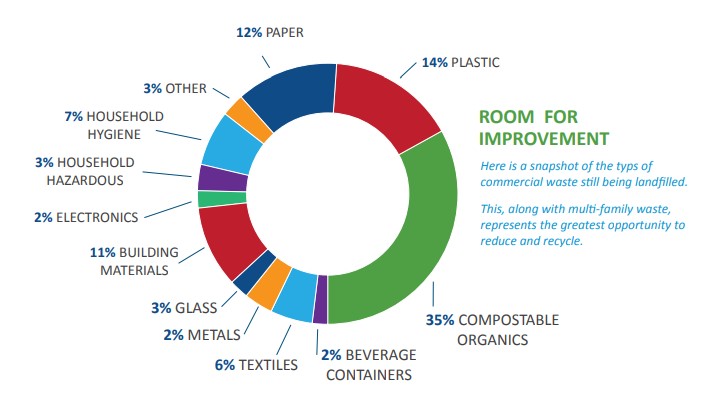
Figure 3: Breakdown of what waste is collected at the Landfill. Photo from Regional District of Nanaimo Solid Waste Management Plan, 2011.
Various types of gases are produced as a result of the decomposition of the garbage over time. To prevent these gases (CO2, H2S, CH4) from going straight out of the landfill and into the atmosphere, tarps are put over the garbage, and vertical wells and horizontal trenches are in place along the garbage. The wells and trenches suck out gases from the garbage and this is then transported to the flare stack. The flare stack can be seen in Figure 4 below. There are about 50 vertical wells and 20 horizontal trenches on the site. In years prior, the gas was collected and sold to a local company that would use the gas to power engines and convert it into electricity. This is unfortunately no longer done, but the landfill is looking for opportunities like this again. The flare burns off about 5000 units per hour (I’m not sure if this is in liters, gallons, or the unit of measurement). Interestingly, the amount of gas produced is dependent on the weather. In areas such as Kamloops that have less rain than us, there is less methane produced. So, due to our precipitation amounts, especially in the Winter, Spring, and Fall, we produce more methane. In the summer or during hot, dry periods, there is less methane produced. Other byproducts of the decomposition of the garbage, such as leachates, are collected deep in the ground and these go through the municipal sewer system.
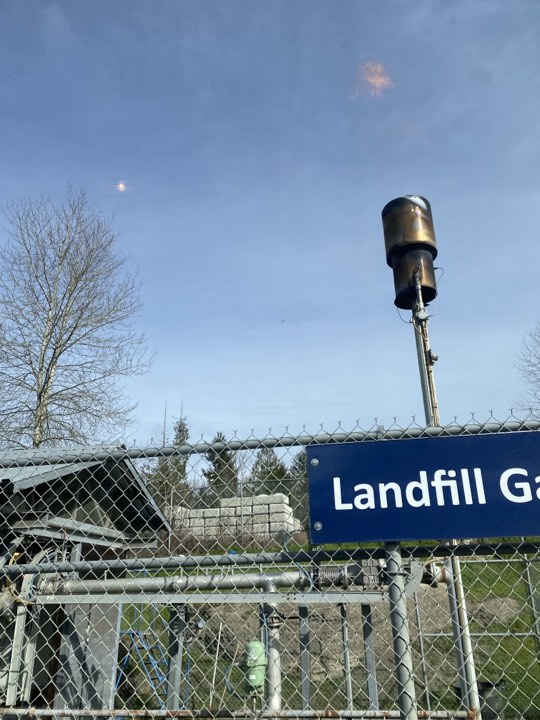
Figure 4: Flare stack at the landfill that is burning off gases such as methane. Photo taken by the author.
A big problem they have at the landfill is birds. Seagulls in particular cause many problems for the workers here, such as carrying the garbage out of the landfill, eating the garbage, and flying around machinery which can cause dizziness and vertigo for the operators. To mitigate the bird problem, workers crack whips every hour to scare them away, set off bear bangers, and use birds of prey like Lulu. Lulu is a Harris Hawk from South America who was born in captivity at the Raptor Centre in Duncan. Lulu is a working bird that is used to scare off the gulls from the landfill periodically. She does tend to chase and sometimes each the seagulls, so she’s kept close to her caretakers. At the landfill tour, we were able to meet Lulu and her caretaker, and they can be seen in Figure 5.

Figure 5: Lulu and her caretaker at the Landfill. Photo taken by the author.
Concluding Comments
Overall, I found my experience at the Nanaimo Regional Landfill extremely valuable. I have ‘garbage anxiety’, where I worry about everything that goes into the bin and isn’t recycled. I found this field trip calmed that anxiety a bit to know the right people are doing the right thing for our garbage are doing the best they can and are willing to try new things to help the environment. I will still obsess over how much I recycle and do better not to buy any plastic, but sometimes it’s unavoidable. I hope in my future and future generals can see a world with less plastic, or better ways to deal with it. Also, we don’t continue on the path of being a ‘throw-away’ society and do better for the environment.
References
Regional District of Nanaimo, RDN. (2011). Regional District of Nanaimo Solid Waste Management Plan. https://ehq-production-canada.s3.ca-central-1.amazonaws.com/documents/attachments/19bfa88f15b66506661bdd787854fd0e05cd3369/000/007/983/original/RDN_Stage_3_SWMP_Full_Report.pdf?X-Amz-Algorithm=AWS4-HMAC-SHA256&X-Amz-Credential=AKIA4KKNQAKIOR7VAOP4%2F20240315%2Fca-central-1%2Fs3%2Faws4_request&X-Amz-Date=20240315T212354Z&X-Amz-Expires=300&X-Amz-SignedHeaders=host&X-Amz-Signature=0e7c216b990ed3a12606f7689674fefbd7e0896dce996a03fcbe76ce2aa66768. (Accessed on March 15, 2024).
